
What Can You Do to Preserve Muscle Mass During Fat Loss?
Wanting to preserve muscle mass? Losing fat can be a challenging task, and it


What Can You Do to Preserve Muscle Mass During Fat Loss?
Wanting to preserve muscle mass? Losing fat can be a challenging task, and it

24-Hour Fast: What are the benefits and risks?
“24 hours with NO FOOD?” “WHY DO THAT?” “I THINK I WOULD DIE…” That is

Meal Prep 101: Essential Kitchen Tools and Supplies
If you’re looking for ways to meal prep like a boss, then you’re in the
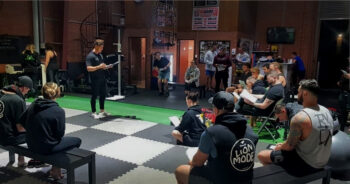
How to Run a Transformation Challenge at your Gym
Running a transformation challenge is a great way to motivate clients to reach their fitness
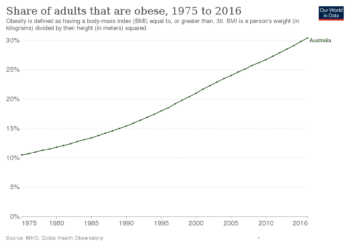
Obesity: too big of a problem not to talk about
The Importance of Optimal Nutrition in the Face of Rising Obesity in Australia According to
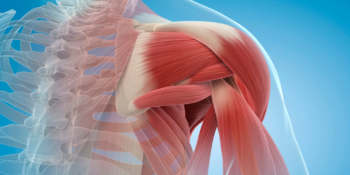
Maintaining Shoulder Health: Understanding Causes, Symptoms, and Solutions
Maintaining Shoulder Health: Understanding Causes, Symptoms, and Solutions Shoulder pain is a common problem that
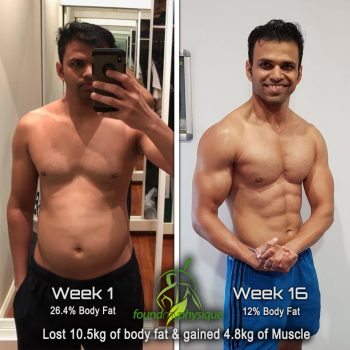
Body Recomposition’s DO happen: Client results – Jack’s 16-Week Intermittent Fasting Transformation
Quick Intro: I don’t usually do “client spotlight” posts, but this one is just too
How Much is 30 Grams Of Protein? – FREE Infographic & Recommended Intake Amounts
Many people struggle to achieve their protein targets for the day, but this simple target
The F45 Diet: How to modify, adjust or choose alternatives for success
Introduction Modifying the F45 diet may be simple for those who have a higher level
Wanting to preserve muscle mass?
Losing fat can be a challenging task, and it becomes even more difficult when you want to retain your muscle mass while shedding the extra pounds. Muscle mass is essential for good health, as it increases metabolism, supports posture, and provides strength for daily activities.
Losing muscle mass can result in a decrease in metabolism, leading to a slowdown in weight loss progress.
Fortunately, there are several ways you can preserve your muscle mass while losing fat.
In this article, we will explore the factors that impact muscle mass during fat loss and discuss the literature that supports them.

When you are trying to lose fat, it is common to reduce your calorie intake. However, if the calorie deficit is too large, it can negatively affect your muscle mass.
A large calorie deficit can cause the body to use muscle tissue as an energy source, leading to muscle loss.
To prevent this, it is important to maintain a moderate calorie deficit and avoid extreme diets that drastically reduce calorie intake.
A 20-30% reduction from your maintaince calories should be sufficent.
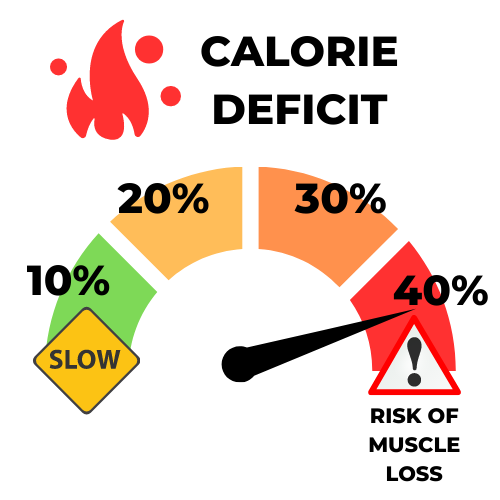
The types of exercises you do can also impact muscle mass during fat loss. Resistance training, also known as weightlifting, is an effective way to preserve muscle mass. It stimulates muscle growth and helps maintain muscle mass during weight loss.
Cardiovascular exercise, on the other hand, does not directly preserve muscle mass but can help with fat loss and overall health.
Cardio should not be your PRIMARY form of exercise if your goal of a fat loss phase is to also retain muscle mass. Infact, too much cardio may negatively effect lean mass / muscle retention during a fat loss
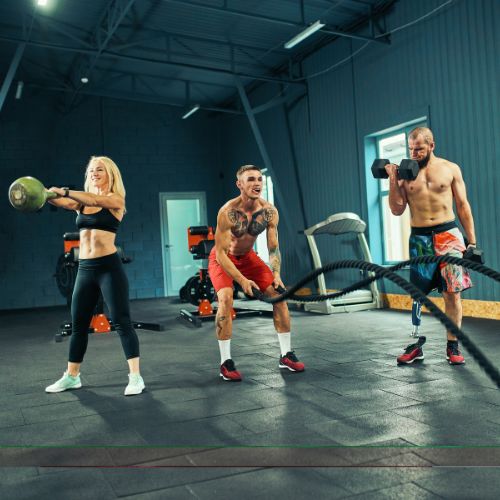
Summary: Cardio should be limited to less than 30% of your exercise schedule and mostly be used as a method to burn extra calories.
Protein is crucial for building and repairing muscle tissue. When you are in a calorie deficit, it is even more important to consume enough protein to preserve muscle mass.
A general rule of thumb is to consume around 2 grams of protein per kilo of body weight per day.
This will provide your body with enough protein to support muscle growth and repair.
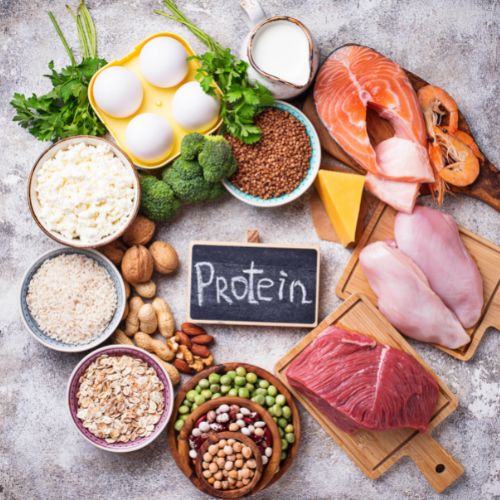
Getting enough sleep is essential for muscle recovery and growth. During sleep, the body repairs damaged muscle tissue and releases hormones that support muscle growth. Lack of sleep can negatively impact muscle recovery and growth, leading to muscle loss. Various studies have shown that sleep deprivation during a fat loss period can actually increase the amount of lean mass (and muscle) lost.
Summary: Those who get higher quality sleep will retain more muscle mass / lean mass than those who’s sleep is low quality.

Research shows that resistance training is an effective way to preserve muscle mass during fat loss. Participants who engaged in resistance training while on a calorie deficit maintain more or their muscle mass while losing fat than those who do not do resistance training.
The data is very clear, various study suggests that incorporating resistance training into your weight loss program will help you retain muscle mass.

Majority of people will lose a bit of lean mass weight during a weight loss. Some of this is from the decreases in carb intake, which also increases water retention within the body as carbs attract water. So, saying that, some lean mass will appear to fade but then it will return when transitioning to maintainece calories. Accurately measuring the lean mass loss can be difficult, but followng the guidelines in this post will help with establishing the guiderails for your transformation.
Its generally recommend you lose weight no faster than 0.5–1% of your body weight per week. The fatter you are, the higher you can goin that range. The leaner you are, the closer to 0.5% you should be.
That said, even if you can get away with losing weight at 1% of your body weight per week, it may not be best to attempt to do so if you also want to preserve lean mass / muscle mass.
Small / Very Lean = 0.5-0.75% body weight per week (perhaps -0.3-0.6kg per week)
Most people = Around 0.75-1% body weight per week (perhaps 0.5-1kg per week)
Overweight / Obese = More than 1% of body weight per week (perhaps 0.8-1.3 kg per week)
This is generally not recommended, as sustainable progress will be the best way to ensure you get to your target weight. That being said, sometime the psychological benefit for ‘getting in shape’ for the individual is a valid goal, and rebuilding after (if done correctly) can be relatively simple.
There are risks:
However, some folk just wat to get the job done (or they are trying to win a challenge). If this is you, be sure you apply as many of the principles in this post as possible. Also be sure you:
Losing fat while preserving muscle mass is achievable with the right approach. Maintaining a moderate calorie deficit, incorporating resistance training into your program, consuming enough protein, and getting enough sleep can all help preserve muscle mass. By following these guidelines and implementing them into your weight loss program, you can achieve your fat loss goals while retaining your muscle mass.
"24 hours with NO FOOD?"
"WHY DO THAT?"
"I THINK I WOULD DIE..."
That is the usual responce I get when I mention this to friends or clients. Well… let me explain.
I have recently been experimenting with regular 24 hour fasting for health and weight loss benefits… My sunday fast (24 hours) is something I now look forward to and I though I would share the reasoning and justifications behind my decision to do this every week.
Sit back, grab a coffee and enjoy this 5 minute read
A 24-hour fast is a period where a person abstains from consuming any food or calories for 24 hours. It typically starts after dinner and lasts until the following day’s dinner.
During this time, it is still important to drink plenty of water and other non-caloric beverages to stay hydrated. Black coffee and green/black tea are generally accepeted as part of the protocol, but some protocols only allow for water.
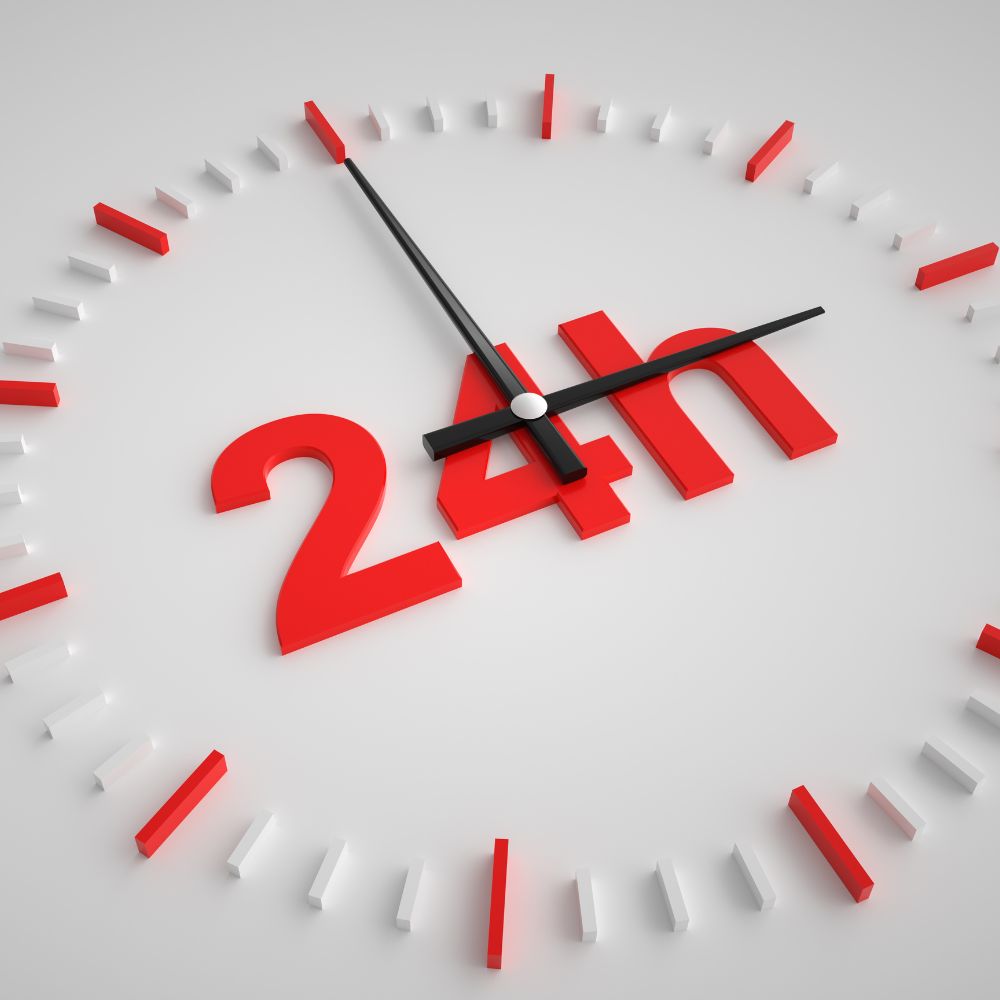
The purpose of a 24-hour fast is to give the digestive system a break, promote weight loss, improve metabolic health, and potentially provide other health benefits.
There are several benefits to doing a 24-hour fast, including:
The term “starvation mode” refers to a metabolic response that occurs when the body is deprived of food for an extended period.
The body’s metabolism slows down to conserve energy and preserve body fat, which can make it more difficult to lose weight. However, the exact timing of when fasting becomes “starvation mode” is a matter of debate among experts.
Some studies suggest that the body may begin to enter starvation mode after as little as 16-24 hours of fasting, while others suggest that it may take several days of fasting before this response occurs.
For example, a study published in the American Journal of Clinical Nutrition found that after 72 hours of fasting, the metabolic rate decreased by an average of 8%, which is consistent with the body entering starvation mode (1).
Another study published in the Journal of Translational Medicine found that participants who fasted for 48 hours experienced a decrease in resting metabolic rate, but that this response was not significant enough to be considered starvation mode (2).

Overall, the timing of when fasting becomes “starvation mode” may depend on factors such as the individual’s body composition, level of physical activity, and the length and frequency of the fast.
One of the main benefits of a 24-hour fast is giving the digestive system a break. During a fast, the body does not have to spend energy digesting food and can instead focus on repairing and rejuvenating other systems.
This can lead to improvements in gut health, as well as a reduction in inflammation and oxidative stress. In addition, fasting has been shown to improve insulin sensitivity and lower the risk of chronic diseases such as diabetes, cardiovascular disease, and cancer (3).
Research has found that even short periods of fasting can have a positive impact on gut health.
A study published in the journal Cell Reports found that intermittent fasting, which includes periods of 24-hour fasts, can help to increase the diversity of gut microbiota, which is important for overall digestive health (4).
Another study published in the journal Nutrients found that fasting can help to reduce inflammation in the gut and improve symptoms of inflammatory bowel disease (5).
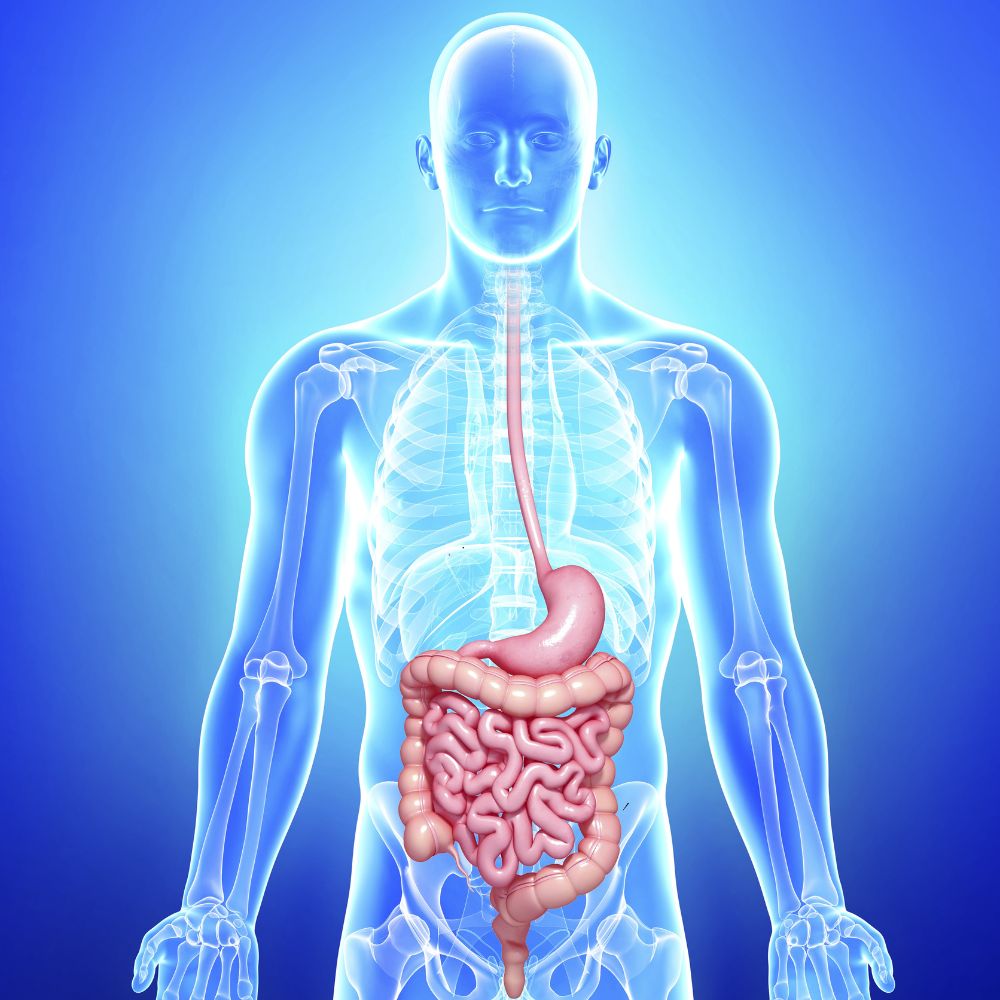
Overall, giving the digestive system a break, through a 24-hour fast can have numerous benefits for overall health and well-being. Especially for those who regularly experience digestive system issues.
Fasting reduces calorie intake, which can lead to weight loss. In one study, people who fasted for 24 hours lost an average of 1.2 kg (2.6 lbs) of body weight (6). This weight will later return when you re-feed (depending on how much you eat), however, your daily and weekly calorie intake will be reduced by the extended time period without food, resulting in some weight loss.

Fasting can also increase metabolism, which may further contribute to weight loss. One study found that fasting for 24 hours increased metabolic rate by 3.6-14% (7).
It is important to remember that daily calorie in/out is the most important factor for weight gain/loss. Without a sustained calorie deficit, fasting itself will do very little for weight or body fat loss.
Fasting can lower insulin levels, which improves insulin sensitivity. In one study, fasting for 24 hours reduced insulin levels by 20-31% (8).
Improved insulin sensitivity can help with blood sugar control, which is beneficial for people with diabetes. One study found that a 24-hour fast improved glycemic control in people with type 2 diabetes (9).
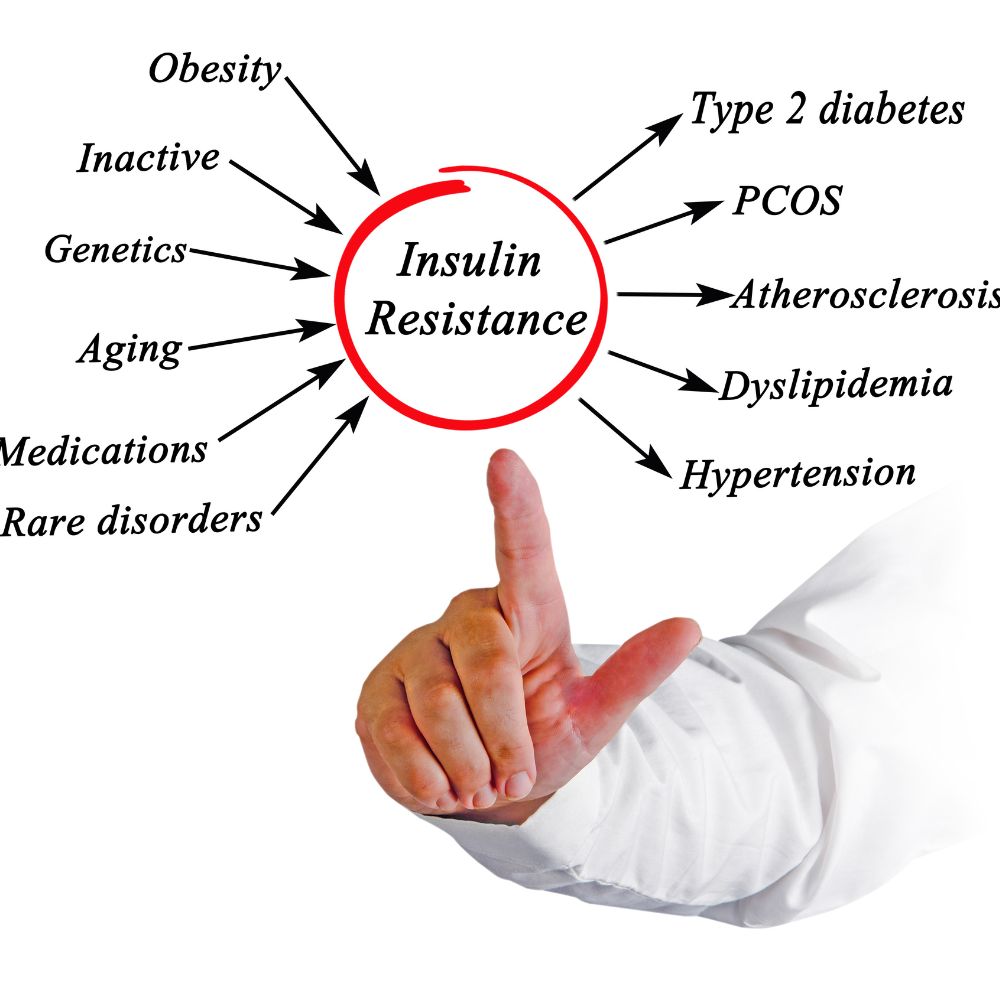
Fasting can reduce inflammation, which is a risk factor for heart disease. In one study, fasting for 24 hours reduced markers of inflammation, such as C-reactive protein (CRP) (10).
Fasting can also lower blood pressure and improve cholesterol levels, both of which are beneficial for heart health. One study found that a 24-hour fast reduced blood pressure and improved lipid profiles in healthy adults (11).

Fasting can increase brain-derived neurotrophic factor (BDNF), which is a protein that helps improve brain function and protect against neurodegenerative diseases. One study found that fasting for 24 hours increased BDNF levels by up to 400% (12).
Fasting can also increase the production of ketones, which can provide an alternative energy source for the brain and improve cognitive function (13).

Studies in animals have shown that fasting can extend lifespan (14).
Fasting has also been found to promote healthy aging by reducing oxidative stress and inflammation, two processes that contribute to age-related diseases (15).
Fasting has also been found to reduce risks of disease, they it can assist with lifespan extension.

Fasting can stimulate the immune system by activating immune cells and reducing inflammation (16).
Studies have also found that fasting can improve the response to vaccinations (better immune cell production), which suggests that it may enhance immune function (17).

Fasting has been associated with a reduced risk of chronic diseases, such as cancer, diabetes, and heart disease (18).
The mechanisms behind these benefits are not fully understood, but fasting has been found to improve various metabolic markers and reduce inflammation, both of which are risk factors for chronic diseases.

According to the literature, there are potential side effects and risks associated with 24-hour fasting. Some individuals may experience symptoms such as headaches, dizziness, fatigue, and irritability, especially if they are new to fasting or have underlying health conditions (19, 20).
Prolonged fasting can also lead to dehydration, electrolyte imbalances, and a decrease in muscle mass (19, 20). It is important to consult with a healthcare professional before starting a fasting regimen, especially if you have a history of medical conditions or are taking medication (20).
While 24-hour fasting can be a safe and effective way to promote health and weight loss, there are certain individuals who should not fast.
These include pregnant or breastfeeding women, individuals with a history of eating disorders, those who are underweight or have a BMI below 18.5, and people with certain medical conditions such as diabetes or kidney disease (20). Additionally, children and adolescents should not fast, as they require regular meals for proper growth and development (20).
If you have any concerns about whether or not fasting is safe for you, it is important to speak with a healthcare professional before starting a fast.
I hope you found this guide useful, if so, give it a share on social media!
Stay frosty,
Simon
-Nutritionist, Owner of Found My Physique
If you’re looking for ways to meal prep like a boss, then you’re in the right place. Meal prepping can be an intimidating task, but with the right tools and a few helpful tips, it can become a stress-free part of your weekly routine. In this article, we will cover the essential kitchen tools you need to navigate the kitchen like a pro and provide tips to help make your meal prep lifestyle a success.

A cast-iron pan is a must-have for any serious meal prepper. Not only can you cook everything except for eggs in it, but nothing distributes heat quite like it, and nothing sears meat the way cast iron does. So, if it was good enough for grandma, it’s good enough for you.
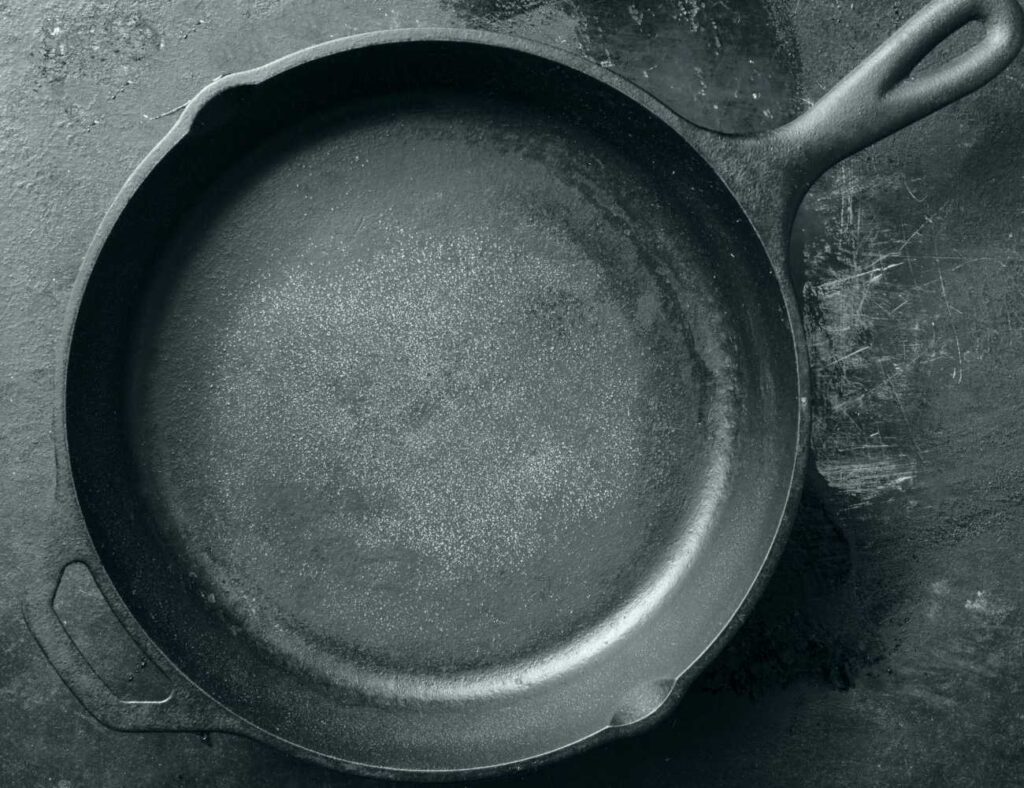
Bigger is better! You can always add fewer ingredients to a pan, but you can’t increase its surface area. That’s why you’re going to need a non-stick pan to cook seafood, veggies, and anything you don’t feel like busting out your cast-iron pan for.
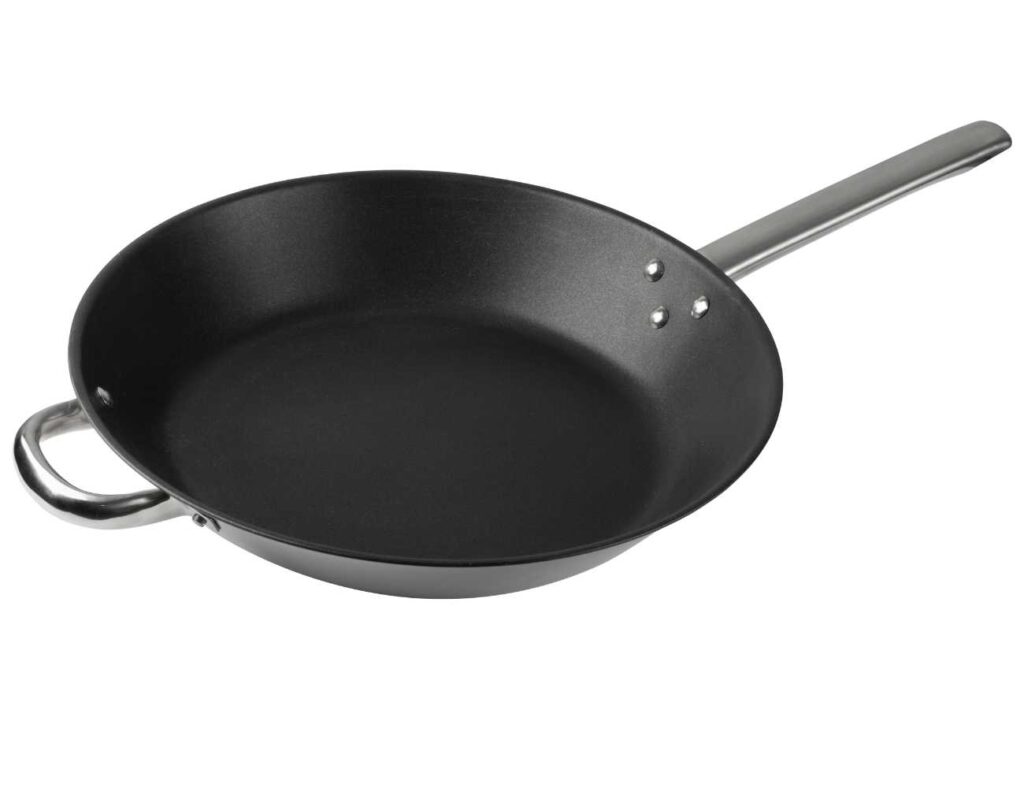
You will need two cutting boards for all of that meal prep you are going to do – a wooden cutting board and a plastic one (for raw proteins). A large wooden board will handle everything except raw meat and protein, which have bacteria that can breed in the wood and cause contamination. A large surface area will prevent you from chasing veggies on the floor. A plastic cutting board should have rubber around the edges, so it does not slide around when being used to prep for recipes.

A good chef’s knife is essential for any meal prepper. 99 percent of the chopping you will do for meal prep can be done with a good chef’s knife. You don’t need to bother buying any other knife besides a paring knife.

If you’re a fan of adding citrus flavor to your dishes, then a microplane zester is a must-have kitchen tool. You can zest fresh lemon, orange, or lime over the top of any dish and totally transform the flavor and add a subtle pop of acid. The microplane is also great for grating Parmesan and Pecorino Romano cheese.

Once you have zested the citrus, you’re likely going to squeeze some juice into something. Instead of using your hands and feeling the burn on that fresh paper cut, you can use a citrus juicer that can squeeze way more juice out than your hands can. Trust us; it’s worth it.
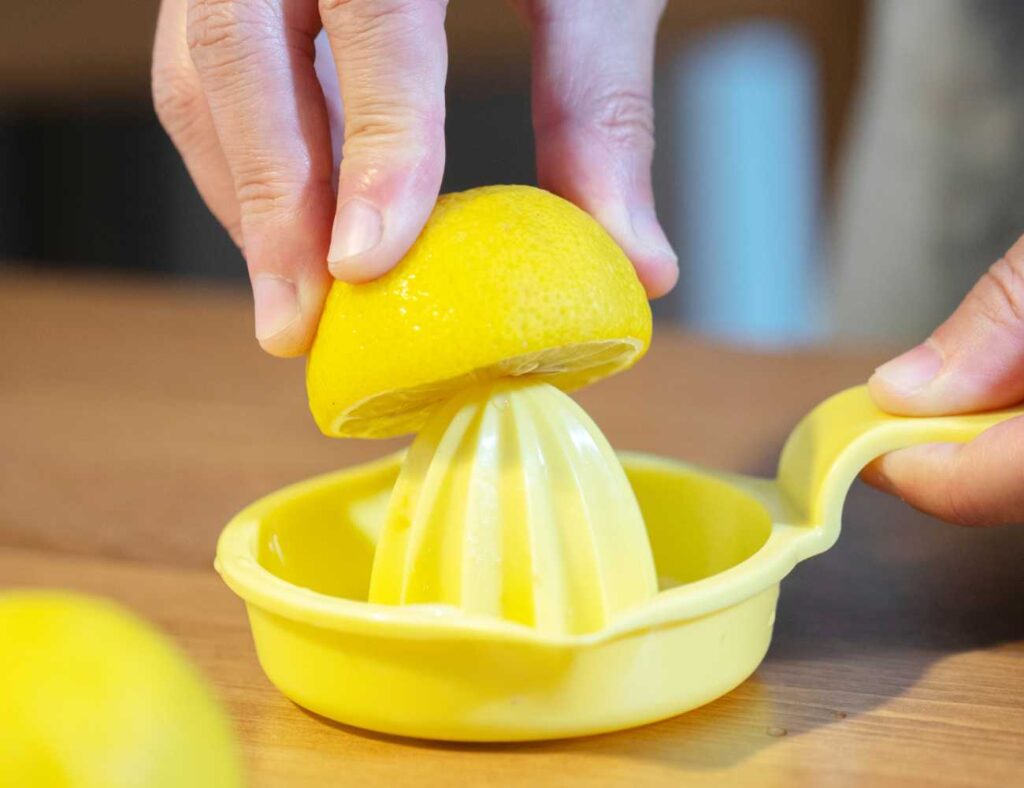
Sheet trays are cheap, durable, and a meal prep essential for all of the veggies and chicken you will be cooking in the oven. People always ask how our sheet trays stay so clean. It’s because we buy new ones as soon as the old ones get nasty.
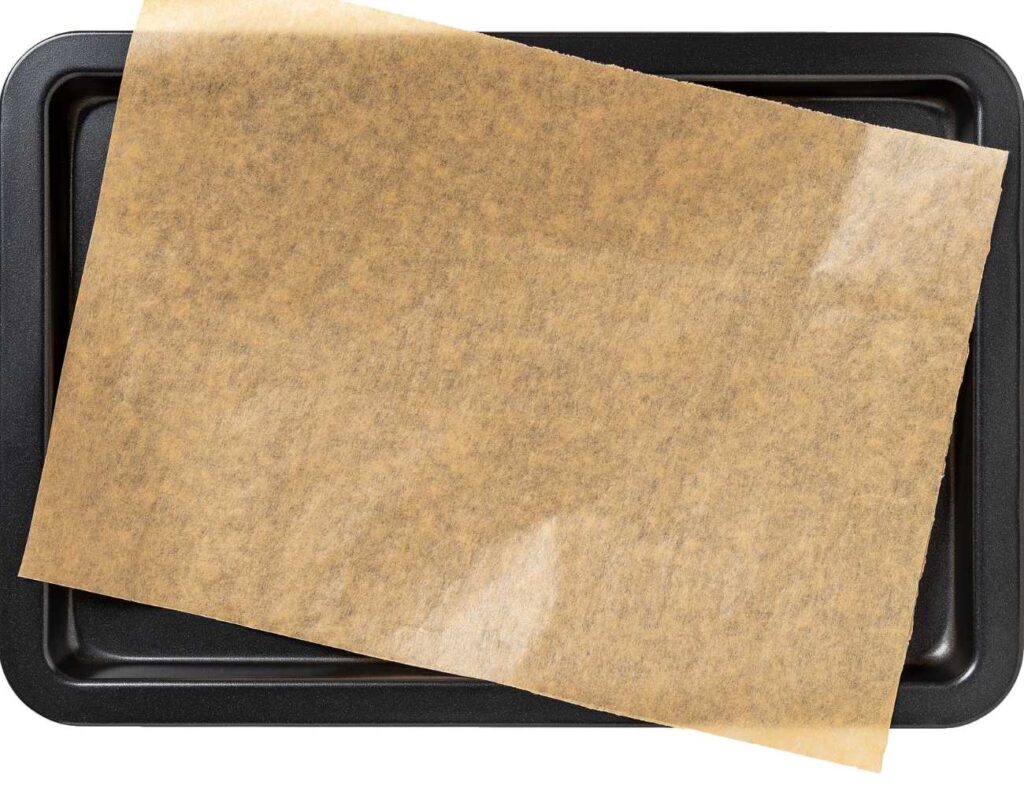
Cooking can be a messy business, but you can make the cleanup process less time-consuming by using a splatter guard to cover the pan while you’re cooking. It blocks the oil from going all over the place.

A colander (or cullender) is a kitchen utensil used to strain foods such as pasta or to rinse vegetables. The perforated nature of the colander allows liquid to drain through while retaining the solids inside. It is sometimes also called a pasta strainer or kitchen sieve.
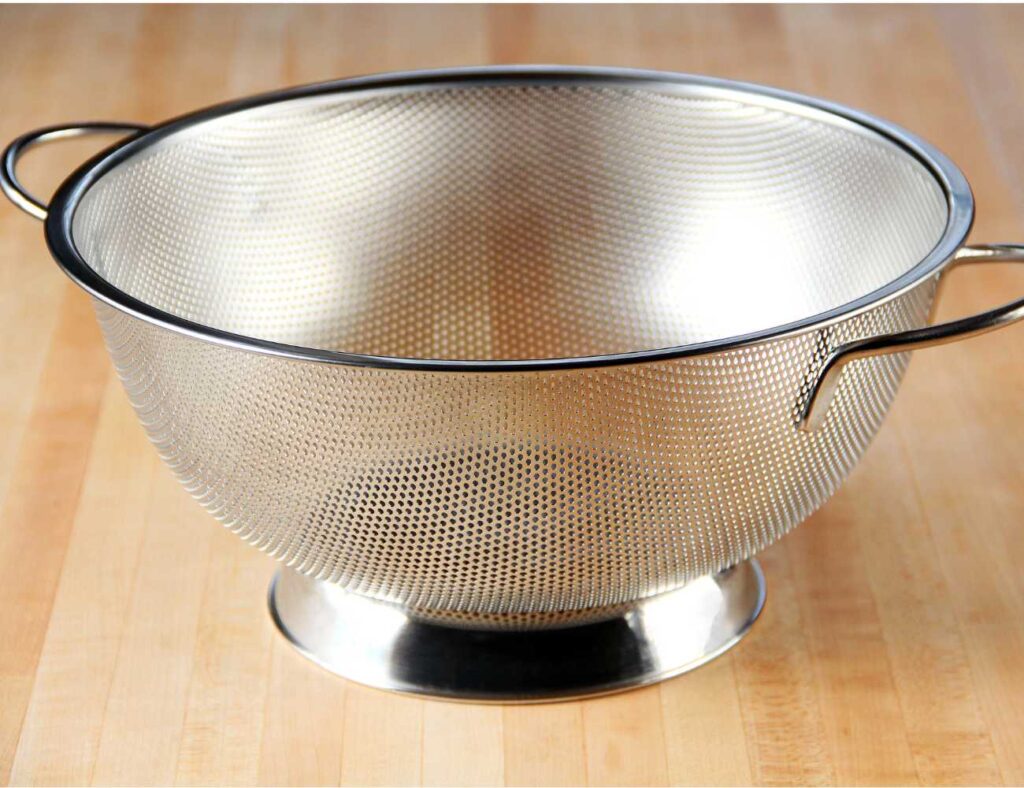
Cooking accurately doesnt need to be too complicated. A set of measuring spoons can help with making sure you are adding the right amount of oils, spices and seasons.

This simple tool can help with measuring out liquids to ensure you are using the correct ammount. You can aquire a set of measuring cups or one large measuring cup that has a range of metrics on the side.
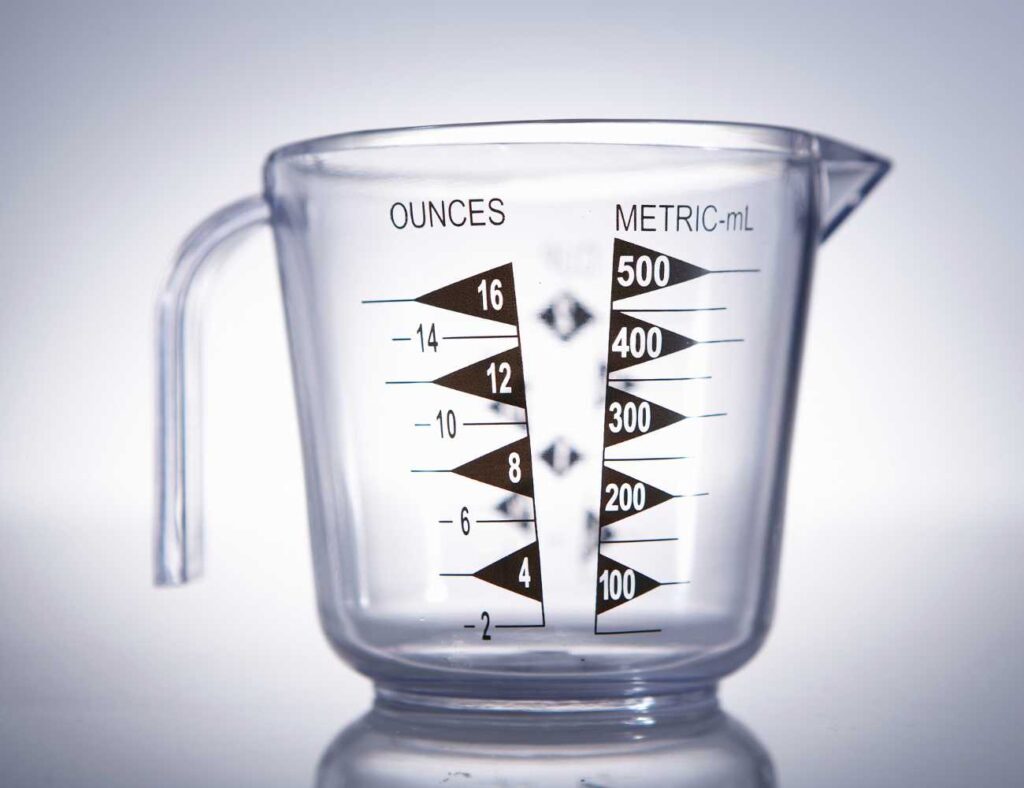
Weighing out your foods will be a critical part of ACCURATE dieting. There can be a lot of unwanted calories added to foods if you are just guessing how much you use. If you are trying to diet accurately, all major calorie dense ingredients should be weighed.
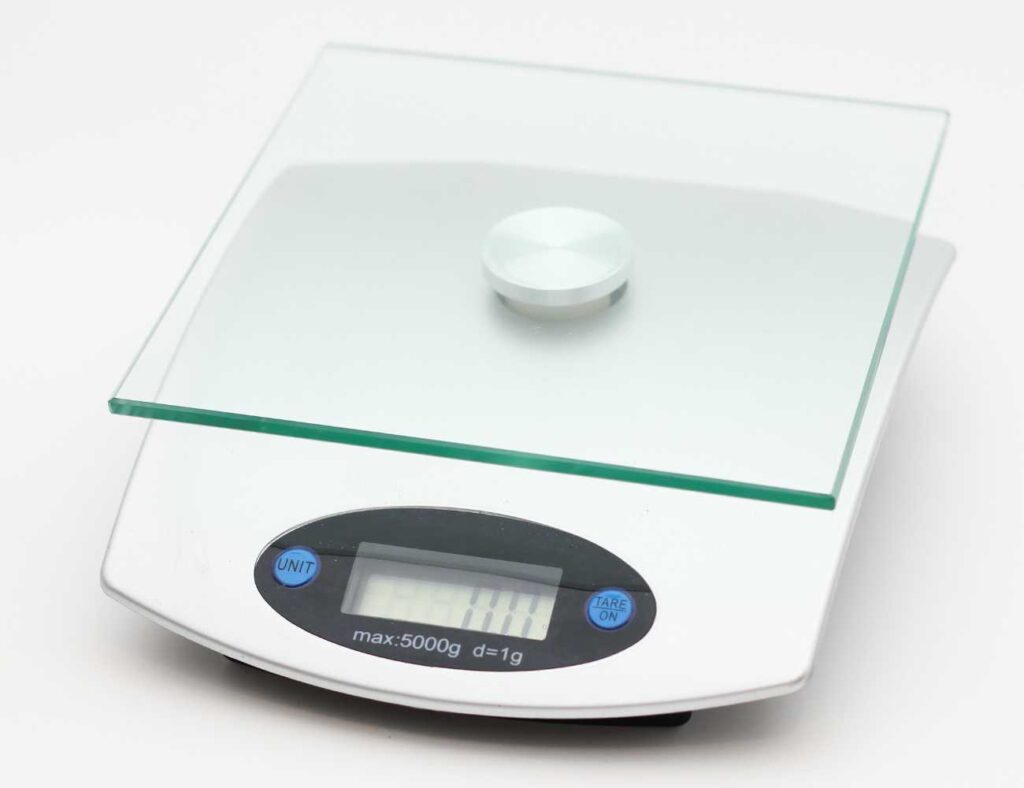
Ceramic bowls are heavy, glass bowls can chip (and also tend to be heavy), and plastic bowls can stain and retain odors, so our ideal mixing bowl is stainless steel. Stainless steel is durable, low-maintenance, lightweight, and can step in as a double boiler.
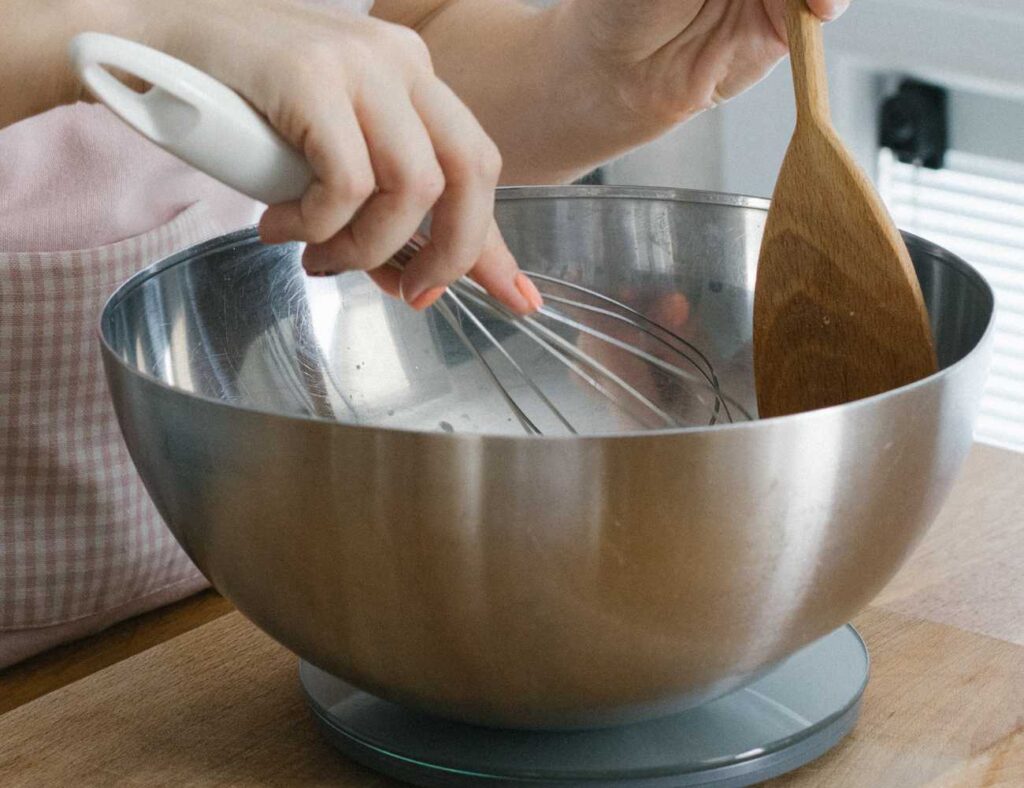
Blenders save so much time and effort, especially if you are someone who enjoys a smoothie. There are many different recipies you can create that take less than 10 minutes and taste delicious. A blender can also make it very easy to consume large amounts of nutrients from fruits and vegetables.
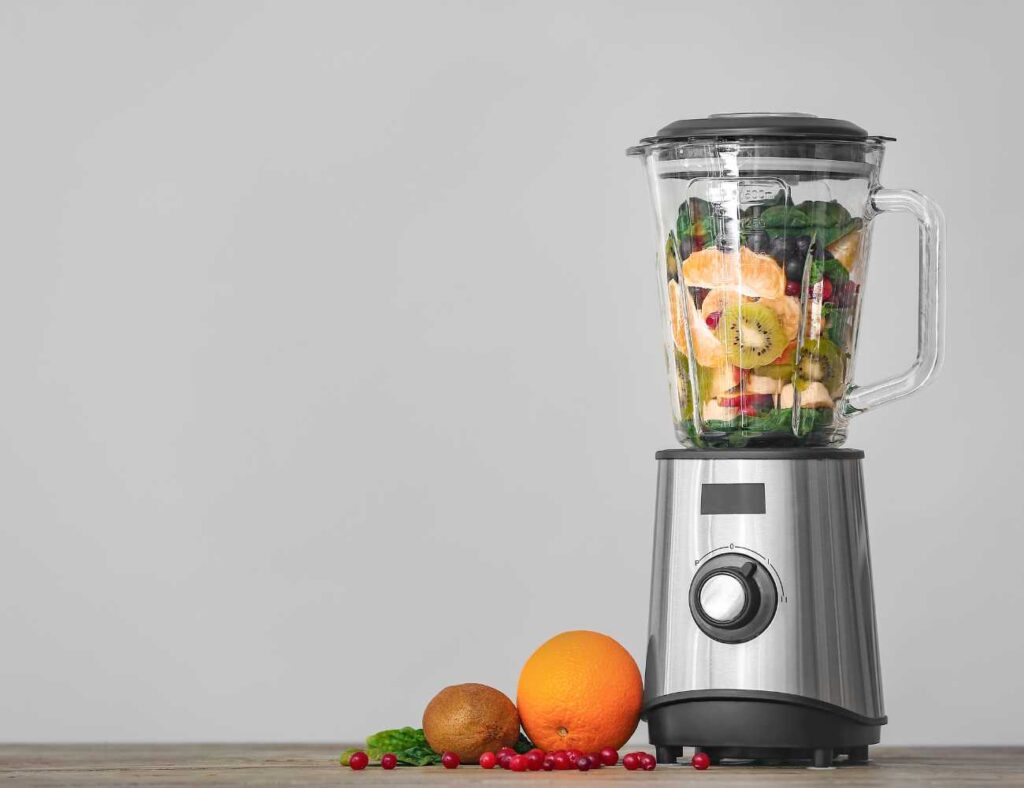
Are you a lazy cooker? Then a slow cooker is a must. Most the recipes are ‘set and forget’ and when the flavours infuse together, and the ingredients are soft yet tender, the flavours can be amazing.

Never overcook another piece of chicken or meat by using a digital probe thermometer; this gadget stays inside the meat while it’s baking in the oven. It has an alarm that tells you when it has reached the desired cooking temperature.
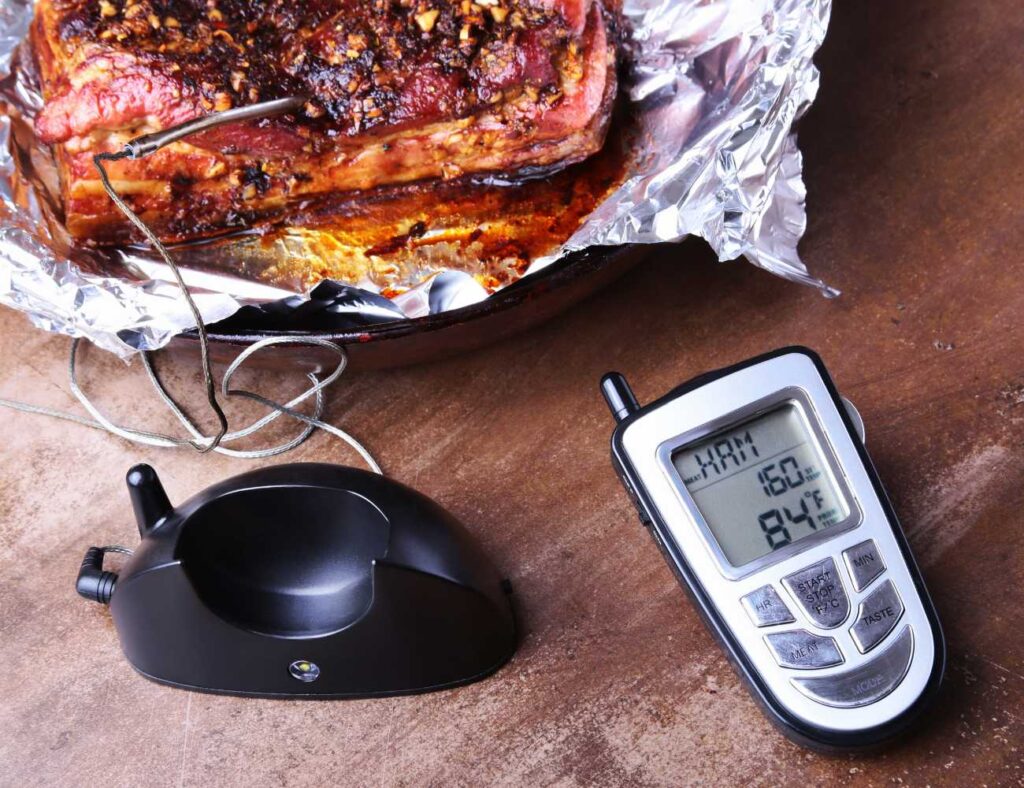
Grab yourself a set of microwave safe containers to store all of your prepped meals. You will use them for years and they are great for taking food with you on the road or on day trips.
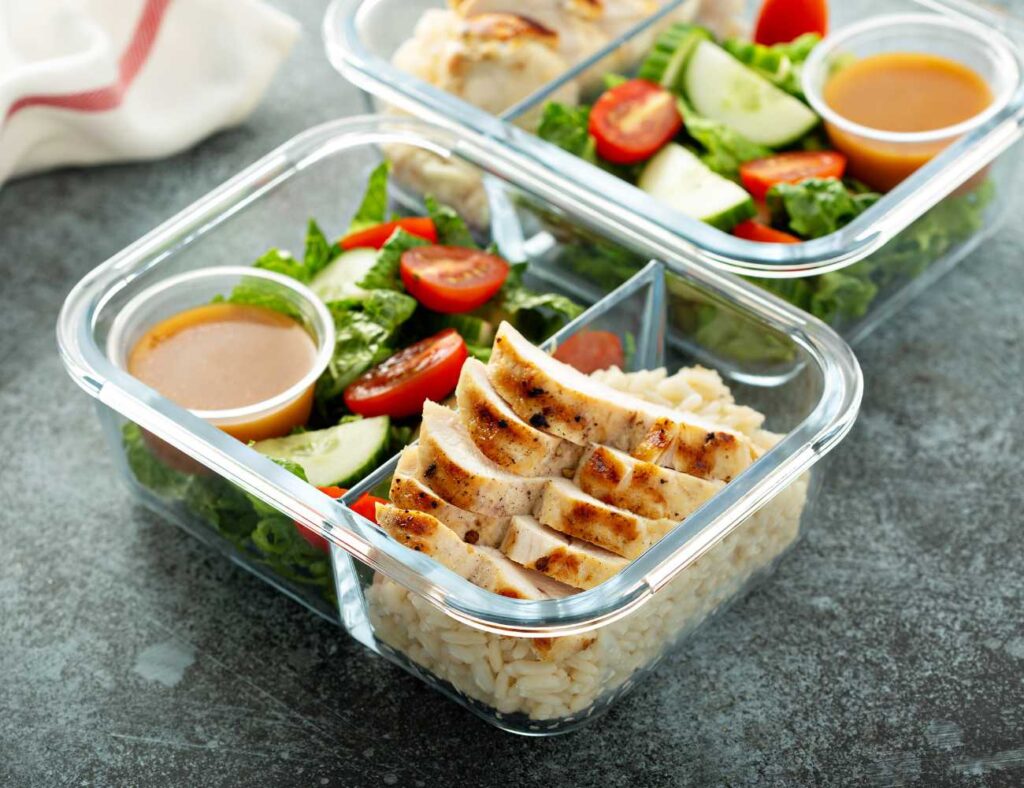
Having a well-stocked pantry is the key to adding flavor.
Spices are the key to making flavorful meals. Keep a variety of spices on hand, such as smoked paprika, cumin, ancho chili powder, and turmeric.
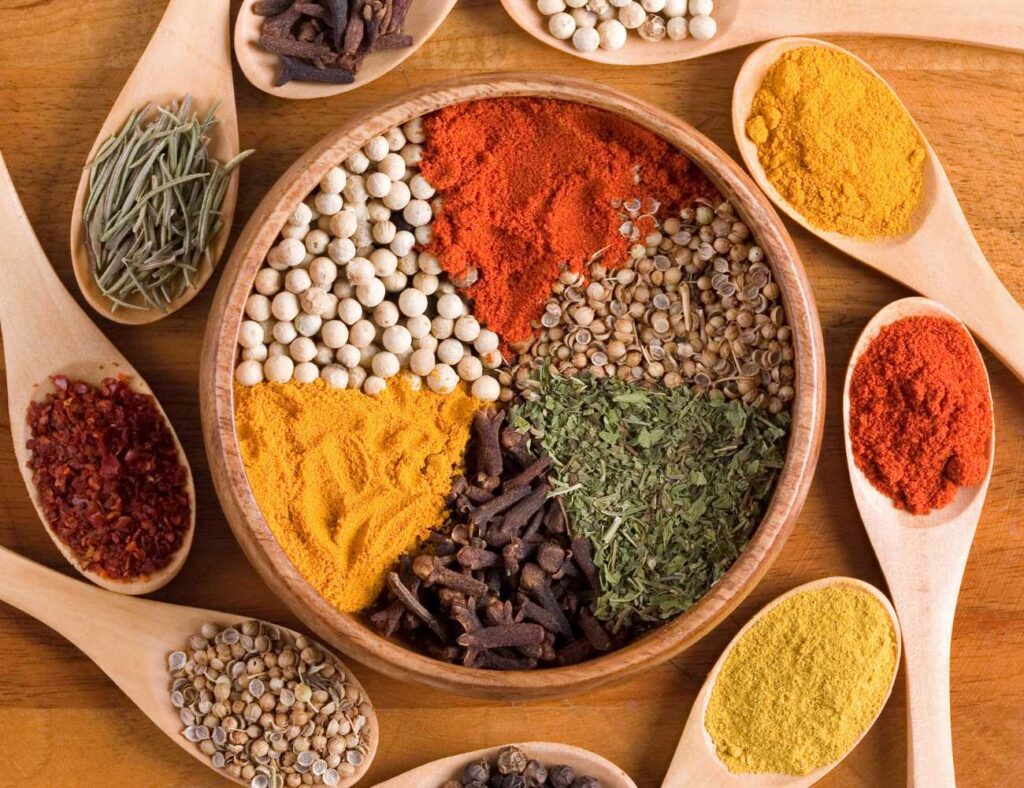
Olive oil and vinegar are essential for making salad dressings and marinades. Keep a few different types of vinegar on hand, such as balsamic, red wine, and apple cider vinegar.

Grains such as quinoa, brown rice, and farro are great for adding texture to meals. Cook a big batch of grains at the beginning of the week and use them in different meals throughout the week.
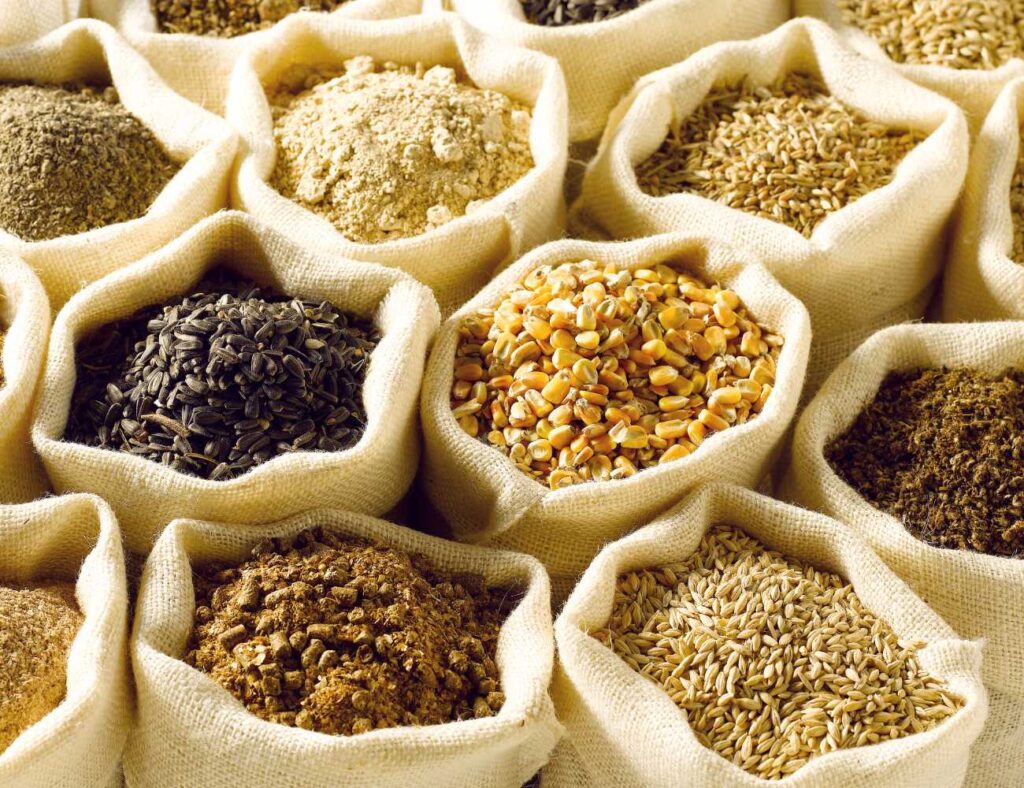
Canned goods such as beans, tomatoes, and coconut milk are great for adding protein and flavor to meals.
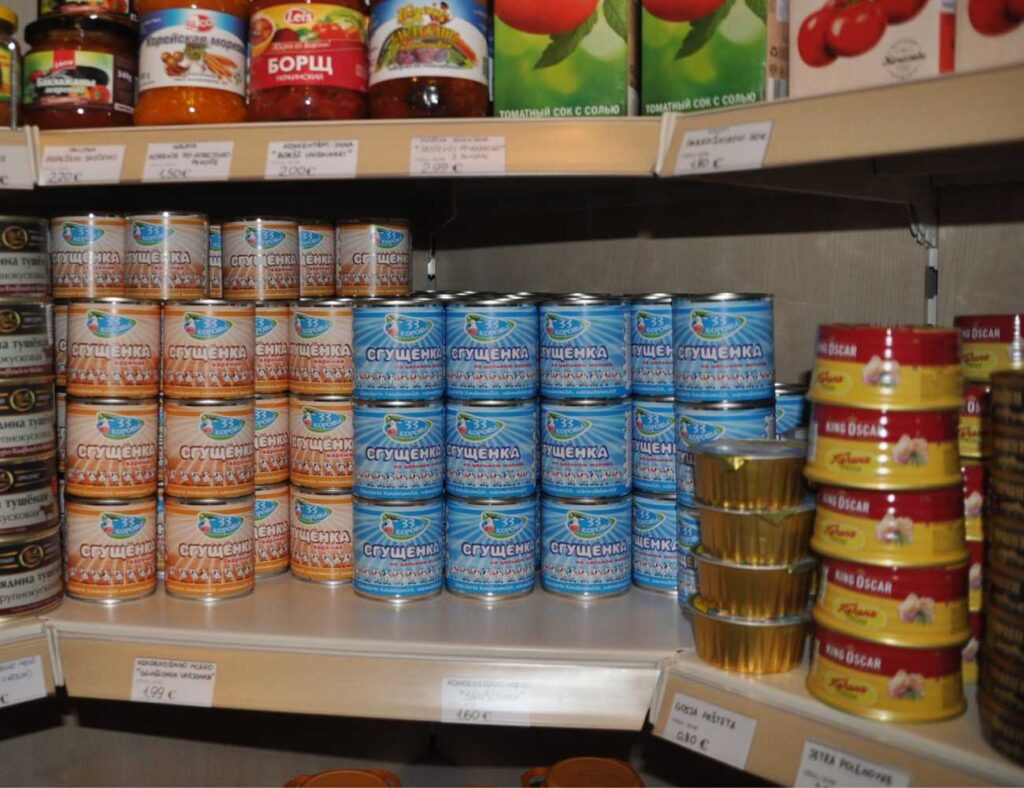
Nuts and seeds are a great source of healthy fats and protein. Keep a variety of nuts and seeds on hand, such as almonds, cashews, and chia seeds.
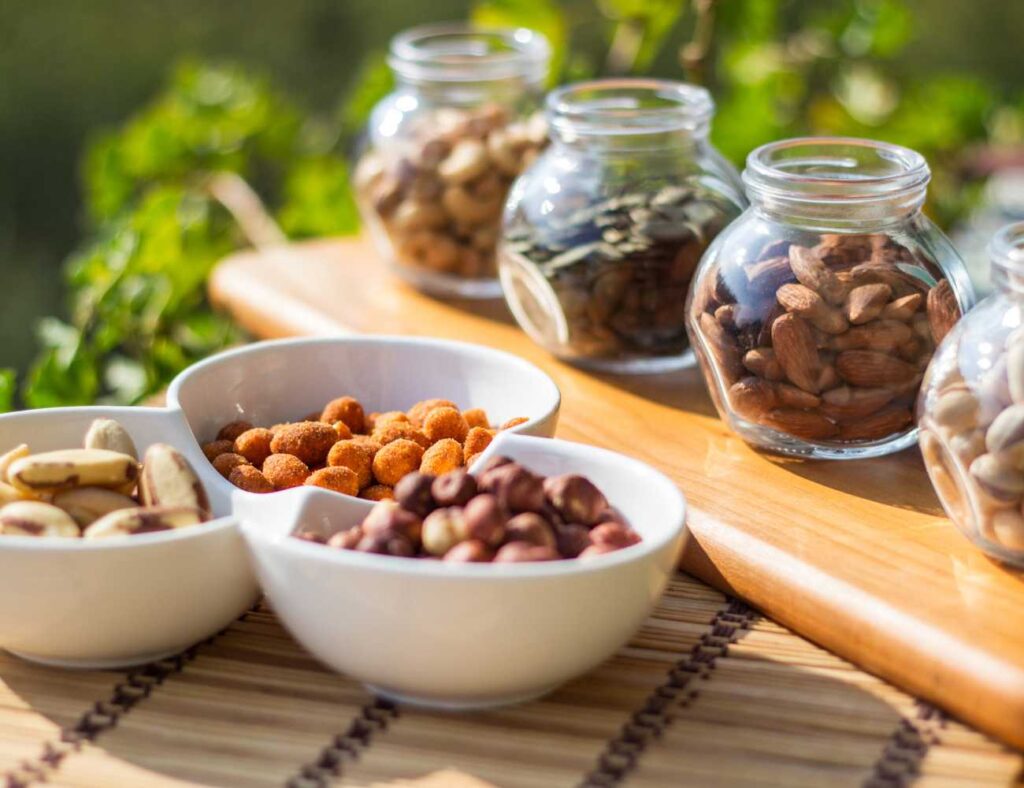
Here is a basic shopping list:
Note: The prices listed are estimates and may vary depending on the location and brand of the products.
We hope you found value in this list!
Be sure to check out the site and share with friends!
-Simon Jager
Nutritionist / Coach / Trainer
Running a transformation challenge is a great way to motivate clients to reach their fitness goals.
Challanges allows gym owners and trainers to create a competitive and supportive environment for their clients, while also increasing revenue for their business.
It is also a great way to attract new customers and keep existing customers engaged with the community

However, one of the biggest challenges of running a transformation challenge is providing proper nutrition plans for clients. Especially when there are so many other aspects that need to be planned.
That is why teaming up with a nutritionist can improve the results of the challenge! Outsourcing nutrition to the professionals is now an valid option.
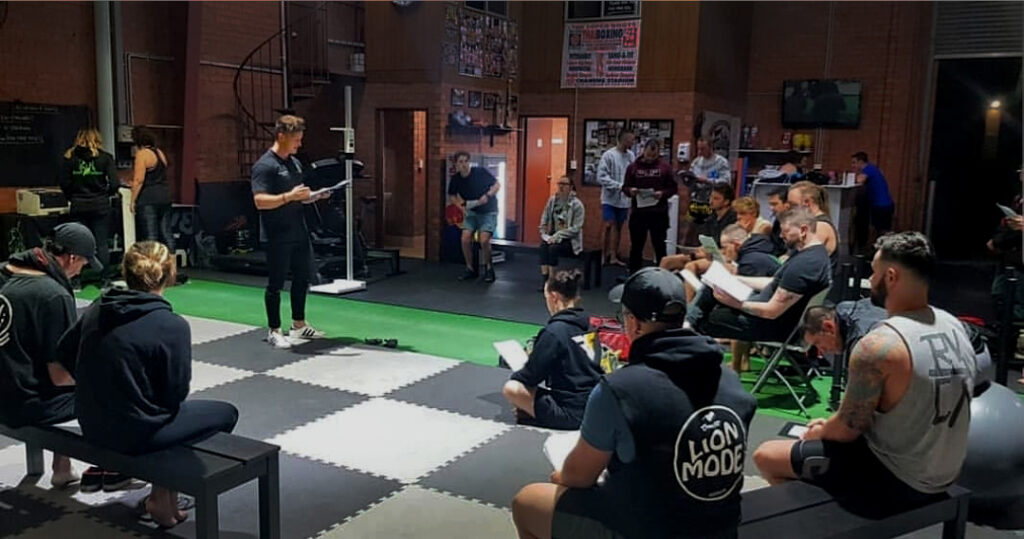
A professional nutritionist has the expertise and knowledge to create personalized nutrition plans for clients based on their individual needs and goals. They can also help clients with nutrition related questions and make necessary adjustments to their plans to ensure they continue to see results.
Outsourcing nutrition to a professional nutritionist also frees up time for gym owners and trainers to focus on other aspects of the challenge, such as organizing events, training clients in the gym and providing support.
It also ensures that clients receive accurate and up-to-date information about nutrition, reducing the risk of misinformation or “trendy” ways to lose weight. We have nutritionists that will write up the nurtrition plans for each and every one of your clients. Learn more here
Running a transformation challenge can be a great way to increase revenue and motivate clients to reach their fitness goals.
However, providing proper nutrition plans can be challenging.
Outsourcing the nutrition to a professional nutritionist ensures that clients receive accurate and personalized nutrition plans while freeing up time for gym owners and trainers to focus on other aspects of the challenge.
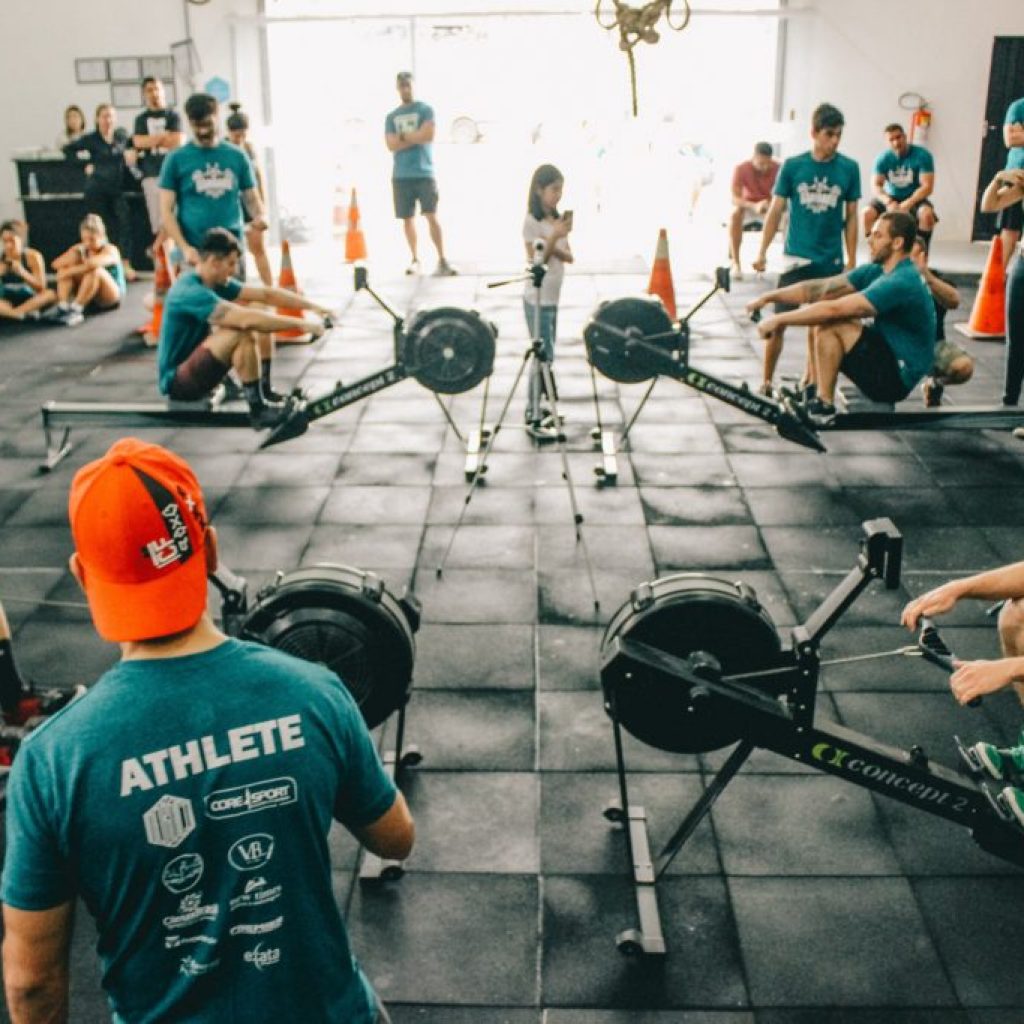
I hope you found this information useful. Be sure to reach out or comment if you have any questions.
By following the steps I have just listed, gym owners and trainers can increase their chances of running a successful transformation challenge. Plus, provide their clients with the support and resources they need to achieve their goals.
Best wishes for your challenge!
– Simon Jager
Nutritionist, Specialised Personal Trainer, Transformation Coach
According to 2007 statistics from the World Health Organization (WHO), Australia has the third-highest prevalence of overweight adults in the English-speaking world. Obesity in Australia is an “epidemic” with “increasing frequency.”
Over the past few decades, obesity levels in Australia have been on the rise, with alarming implications for the health and well-being of individuals and society as a whole.
According to recent data, the rates of obesity in Australia have increased dramatically over the last 50 years. In the 1970s, less than 10% of the population was considered obese. By the 1980s, this figure had risen to 15%. By the 1990s, the obesity rate had jumped to 15%.
By the 2000s, nearly 20% of the population was considered obese followed by another rise to 30% by 2016.
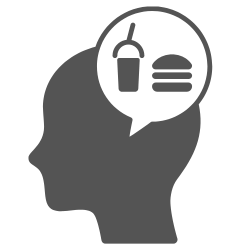
In recent years, this figure has continued to rise, with over 60% of adults now considered overweight or obese.
Thats more than half of the population! Let that sink in!
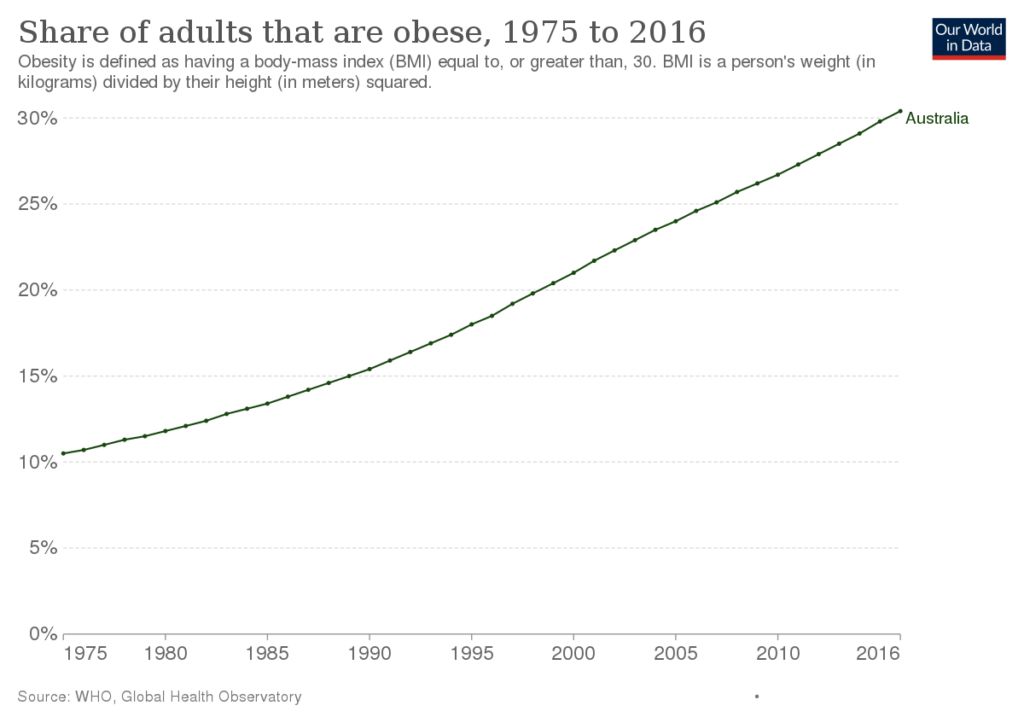
SIDE NOTE: Being overweight refers to having a body weight that is greater than what is considered healthy for a person’s height. This can be measured using a Body Mass Index (BMI) calculation, which takes into account a person’s weight and height. A BMI of 25-29.9 is considered overweight, while a BMI of 30 or higher is considered obese. Obesity, on the other hand, is a more severe form of excess body fat and is associated with a range of health problems, including type 2 diabetes, heart disease, and some cancers. According to the World Health Organization (WHO), approximately 13% of the world’s population is considered obese, with this figure expected to rise in the coming years.
This trend is particularly concerning given the numerous health problems associated with obesity, such as type 2 diabetes, heart disease, and a range of other weight-related health problems. These health problems not only impact the quality of life for individuals but also have significant economic implications, with healthcare costs for obesity and related diseases estimated to be in the billions of dollars each year.
In addition to rising obesity levels, there is also evidence to suggest that average activity levels among individuals in Australia have decreased over the past few decades.
A sedentary lifestyle, combined with poor dietary choices, has contributed to the obesity epidemic in the country.
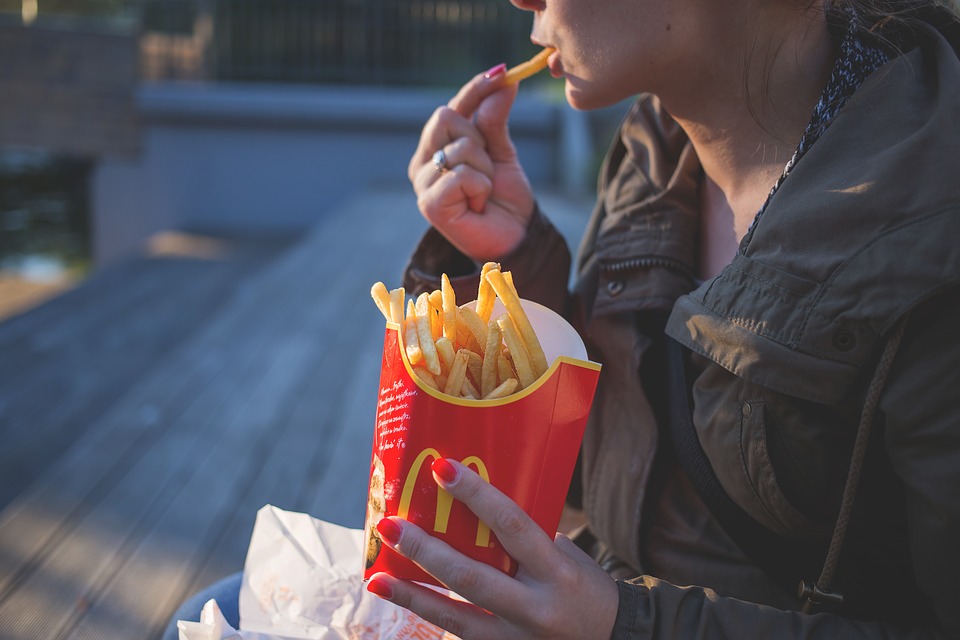
This is where the importance of optimal nutrition comes into play. Proper nutrition is essential for maintaining a healthy weight and reducing the risk of diet-related health problems. It can also improve physical performance, recovery from exercise and injury, and overall well-being.
To achieve optimal nutrition, it is important to adopt a balanced and nutritious diet that includes a variety of healthy foods in appropriate portions. This may include incorporating more fruits and vegetables, lean proteins, and whole grains into your diet, while limiting high-calorie, processed foods.
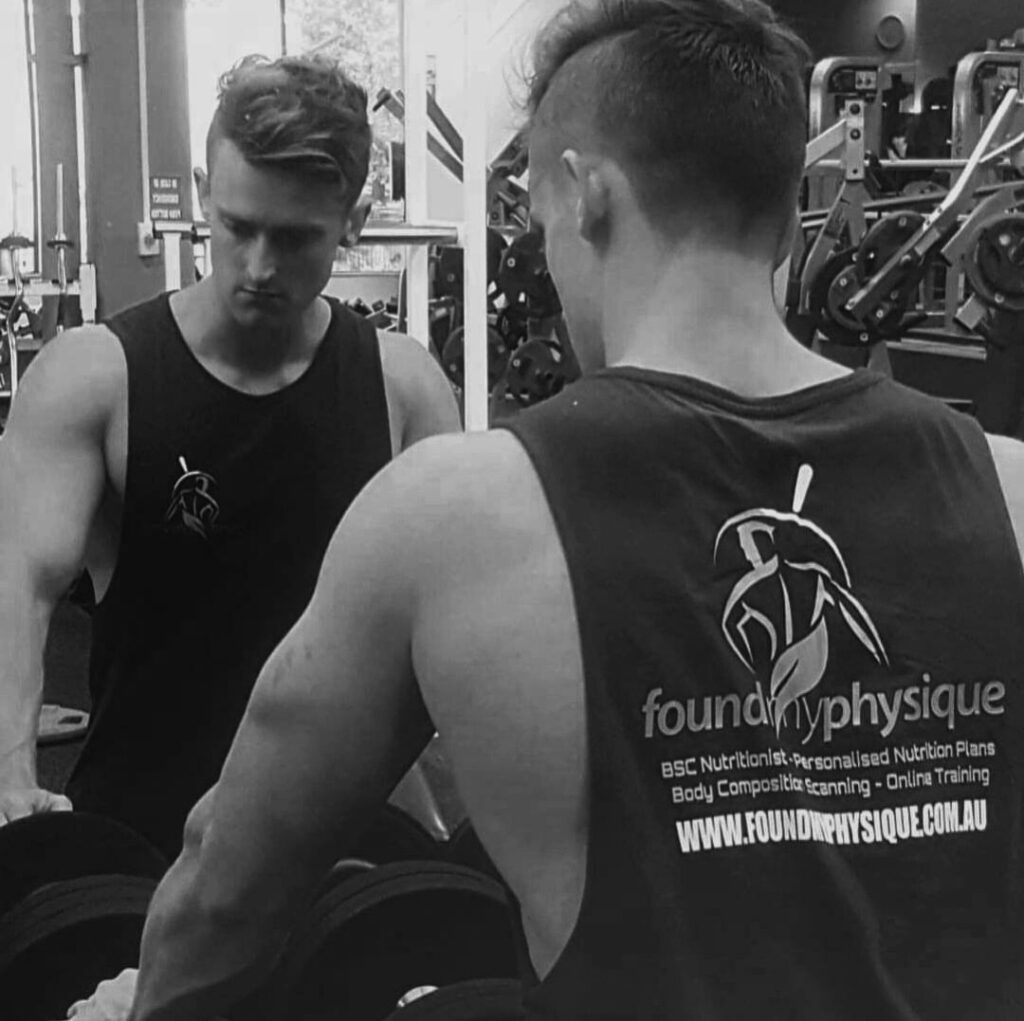
The future is coming, but what is looks like is up to us… should we continue of this current trend of getting fatter?
A world where everyone had optimal nutrition would have numerous benefits for both individuals and society as a whole. Here are a few potential outcomes:
Lower rates of obesity and associated health problems: With a balanced and nutritious diet, rates of obesity, type 2 diabetes, heart disease, and other weight-related health problems would likely decrease.
Improved mental health: Proper nutrition is essential for brain function and can improve mood, focus, and overall well-being.
Increased physical performance and recovery: Optimal nutrition can enhance athletic performance and speed up recovery from exercise and injury.
Lower healthcare costs: With fewer cases of obesity and diet-related diseases, healthcare costs would likely decrease, benefiting individuals and society as a whole.
Increased productivity: Improved health and well-being can lead to increased productivity, creativity, and overall quality of life.
In short, a world where everyone had optimal nutrition would likely lead to healthier, happier, and more productive individuals, as well as a more prosperous society. However, it’s important to note that optimal nutrition is just one factor that affects health and well-being, and there are many other complex social, economic, and environmental factors at play.

Here are some practical steps you can take today to improve your nutritional intake and education:
Make daily little improvements to your meals: Write down what you eat and drink in a day, including portion sizes. This will help you see patterns in your diet and identify areas where you can make changes to improve your nutrition. Then write down small possible changes you can make to improve on each meal
Plan your meals: Plan your meals ahead of time, ensuring that each meal includes a balance of protein, carbohydrates, and healthy fats. This will help you avoid unhealthy snacking and make healthier food choices throughout the day.
Shop smarter: Make a grocery list of healthy foods before you go shopping and stick to it. Avoid shopping when you’re hungry to avoid impulse purchases of junk food.
Read food labels: Get into the habit of reading food labels and pay attention to ingredients, serving size, and calorie content.
Choose water: Instead of sugary drinks, opt for water. This will help you stay hydrated and reduce your calorie intake.
Get moving: Physical activity is an important part of maintaining a healthy weight and reducing the risk of diet-related health problems. Aim for at least 30 minutes of moderate-intensity exercise most days of the week.
Educate yourself: Read books and articles, watch videos, and attend workshops on nutrition to learn more about the role of nutrition in health and well-being.
By taking these practical steps, you can improve your nutritional intake and education, and work towards a healthier, happier you!
In summary, the rising obesity levels in Australia are a cause for concern and highlight the importance of optimal nutrition in promoting health and well-being. By adopting a balanced and nutritious diet, individuals can reduce their risk of diet-related health problems and improve their overall quality of life. As a society, we must prioritize the importance of nutrition education and support individuals in making informed choices about their diet.”

Shoulder pain is a common problem that affects many people, ranging from minor aches to debilitating conditions.
Maintaining healthy shoulders is crucial for everyday activities, including reaching overhead, carrying heavy objects, and playing sports. Poor posture and extended periods of inactivity, such as sitting at a desk all day, can put additional strain on the shoulders and contribute to pain and injury.

In this post, we’ll explore the most common causes of shoulder pain, symptoms of potential issues from bad posture and shoulder positioning, exercises that help with recovery, and guidelines for a timeline for recovery.
To prevent shoulder pain and maintain healthy shoulders, it’s important to maintain good posture and engage in exercises to improve muscle balance and joint mobility.
Common Causes of Shoulder Pain:
Sitting for long periods of time, such as at a desk or in front of a computer, can cause shoulder pain due to poor posture.
When we sit for extended periods, our shoulders tend to round forward, putting stress on the neck, upper back, and potentially decreasing the functional range of motion (ROM) of your shoulder.

In this post, we’ll explore the most common causes of shoulder pain, symptoms of potential issues from bad posture and shoulder positioning, exercises that help with recovery, and guidelines for a timeline for recovery.
Symptoms of an unhealthy shoulder:
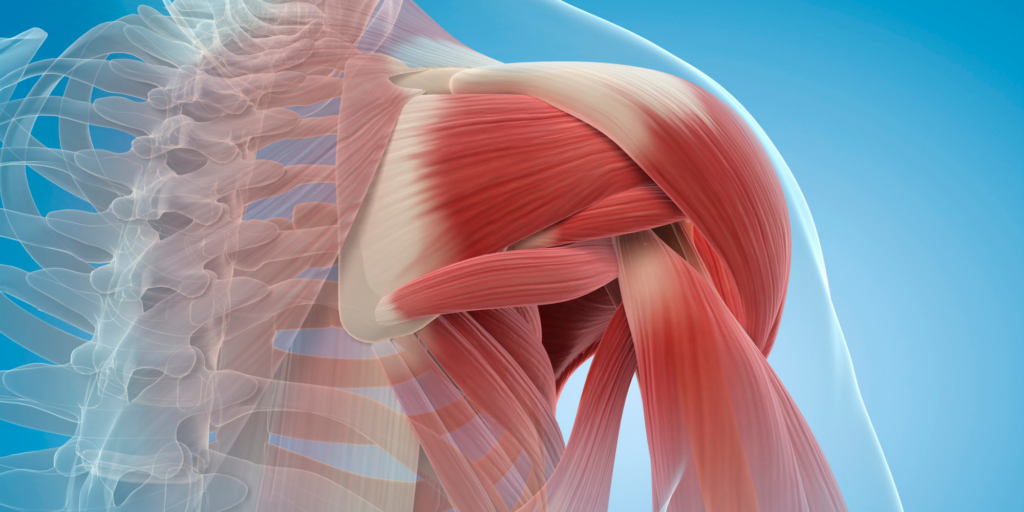
Exercises to Help with Recovery:
Guidelines and Timeline for Recovery:

In conclusion, shoulder pain is a common problem that affects many people, but it can be prevented and managed through proper posture, exercise, and rehabilitation.
If you’re experiencing shoulder pain, seek medical advice for proper treatment and recovery.
Taking care of your shoulders now will help ensure that you can continue to enjoy the activities you love for years to come.
Fuel your potential with healthy nutrition. Found My Physique’s goal is to help make amazing body transformations easy, using proven nutrition and training protocols.

